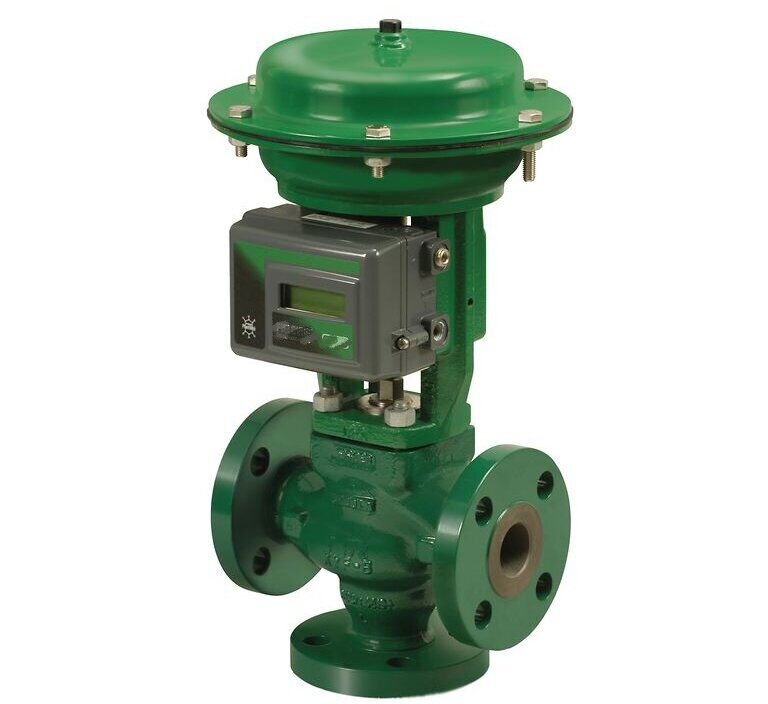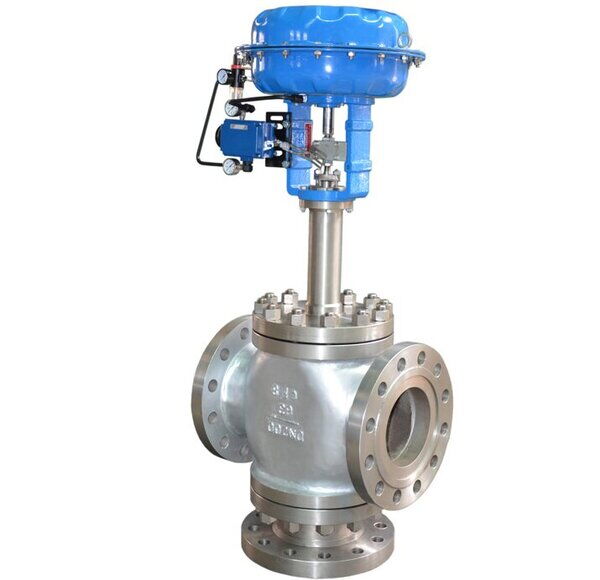
Three-way globe control valves are essential components in fluid and gas control systems, designed to manage flow direction and volume efficiently. With three pipeline connections, these valves provide versatile service for converging (flow-mixing) or diverging (flow-splitting) applications. Available in various configurations, they are crucial for industries requiring precise flow management, particularly in heating, cooling, and blending systems.
This article delves into the workings, features, and benefits of three-way globe control valves, offering an in-depth understanding of their applications and technical characteristics.
A three-way globe control valve is a specialized type of globe valve featuring three ports, allowing it to mix or split fluid or gas flows. These valves can replace two single-ported control valves, offering a more efficient and compact solution. Commonly used in heating, cooling, and blending systems, they are ideal for managing water, oil, seawater, or other liquids in processes involving heat exchange or bypass control.

Three-way globe control valves are available in multiple structural designs, each tailored to specific applications. Here are their main features:
Various end styles and configurations to suit different piping schemes.
Equal percentage and linear trims for precise flow control.
Corrosion-resistant trims for durability in harsh environments.
All trim components are removable, reducing downtime during maintenance.
Low-emission packings to meet environmental regulations.
High-integrity guidance ensures stable flow control across a wide adjustment range.
Durable top-guides and seat-ring guides enhance operational stability.
Three-way control valves operate by directing or mixing fluid through three ports:
In this setup, two inlet ports (A and AB/M) allow separate fluid streams to enter. These streams mix in the valve’s internal chamber and exit through the outlet port (B). Adjusting the valve plug controls the proportion of each stream in the mix.
Fluid enters through a single inlet port (A) and is directed to one of the two outlet ports (B or AB/M) based on the valve plug’s position. This configuration is commonly used for directing flow between two destinations.
Combining the functions of mixing and diverting, this versatile setup allows fluid to flow from either inlet (A or AB/M) and exit through either outlet (B or AB/M) or a combination of both.
Three-way globe control valves are typically operated by actuators that adjust the valve plug or disc in response to control signals. Common actuator types include:
Provide rapid response for high-precision control.
Ideal for automated systems with electronic monitoring.
Used in high-pressure systems requiring robust performance.
Feedback systems and controllers regulate flow, pressure, or temperature to ensure optimal operation.
By combining the functions of two single-ported valves, three-way control valves reduce complexity and space requirements.
Stable flow control with wide adjustment ranges allows for accurate regulation of mixing or diversion.
Corrosion-resistant materials and rugged construction ensure a long operational life.
Low-emission packings help minimize environmental impact.
Easy disassembly and replaceable components reduce maintenance costs.
Three-way control valves are indispensable in industries where precise flow regulation is required. Key applications include:
Used to control the circulation of water or other fluids in heat exchange and bypass systems.
Provide precise control for mixing different fluid streams to achieve desired properties.
Allow the diversion of flow between alternate pathways for streamlined operations.
Widely employed in chemical, oil, and gas industries for flow regulation and blending tasks.
The valve's sterilization and detoxification features prevent bacterial contamination, making them suitable for sensitive applications.
Components like gaskets and packings are made from premium PTFE, ensuring long life and resistance to corrosion.
The optimized flow channel minimizes pressure loss, enhancing efficiency.
Replaceable gaskets and low maintenance costs ensure smooth operation.
The precise structure and excellent sealing eliminate leaks, reducing energy consumption.
Versatile usage in workshops and industrial facilities.
Choosing the correct three-way globe control valve involves considering the specific requirements of your application:
Temperature, pressure, and flow rate must align with the valve's specifications.
Ensure that the valve materials can withstand the fluid or gas being controlled.
Match the actuator to your control system for seamless integration.
As industries advance, the demand for smarter and more efficient control valves is growing. Innovations in actuator technology, such as smart electric actuators with IoT capabilities, are enhancing operational efficiency. Moreover, the development of advanced materials ensures better performance in extreme conditions, making three-way globe control valves indispensable for modern industrial processes.
Three-way globe control valves offer unparalleled versatility and efficiency in fluid and gas management systems. Their ability to mix, divert, and regulate flow makes them indispensable across numerous industries. With their robust construction, easy maintenance, and wide range of applications, these valves are a cornerstone of modern process control technology.
Investing in high-quality three-way globe control valves ensures reliable performance, reduced maintenance costs, and optimal process efficiency, making them an essential choice for any industrial application.